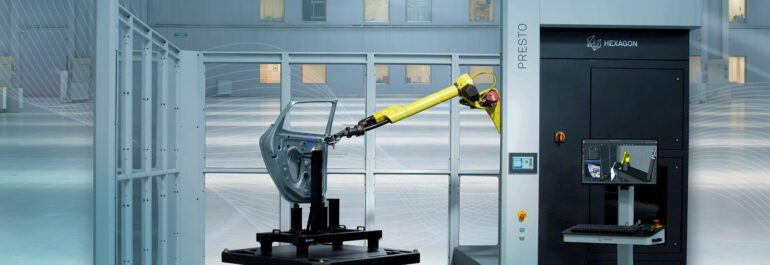TL;DR:
- Presto Automation, known for AI-driven drive-thru technology, relies heavily on human workers.
- SEC filings reveal over 70% of drive-thru orders are handled by off-site human labor.
- Presto Automation’s branding contrasts with its actual use of workers in places like the Philippines.
- Fast-food giants like Carl’s Jr., Hardee’s, Del Taco, and Checkers employ Presto’s AI drive-thru tech.
- SEC is investigating Presto Automation over certain aspects of its AI technology.
- A broader trend emerges where AI solutions often incorporate cheaper human labor.
- An example: Nate, an online shopping app, was revealed to primarily use human workers disguised as AI.
- Presto Automation has reduced kitchen teams’ order handling by approximately 70%, per a Del Taco executive.
Main AI News:
In the realm of AI-driven fast-food drive-thrus, an intriguing revelation has surfaced. Presto Automation, a company that has been vocal about its prowess in automated ordering technology and its potential to optimize labor utilization, is now under scrutiny. Recent filings with the US Securities and Exchange Commission shed light on a surprising truth: the majority of orders processed by Presto Automation are completed by off-site human workers, surpassing a staggering 70 percent.
While Presto Automation has projected an image of cutting-edge AI-powered drive-thru solutions, the reality paints a different picture. Instead of relying solely on advanced technology, Presto Automation has turned to human resources located in countries like the Philippines, as reported by Bloomberg. This AI drive-thru technology is utilized by renowned fast-food chains such as Carl’s Jr., Hardee’s, Del Taco, and Checkers across the nation, all in the pursuit of reducing labor costs and enhancing revenue streams. Central to their offering is the Presto Voice product, designed to leverage AI for streamlined drive-thru order processing.
However, the SEC’s investigation into Presto Automation earlier this year, focusing on certain facets of its AI technology, raises questions about the company’s claims. At the time of writing, Presto Automation has refrained from providing an official response to these inquiries.
This revelation resonates with a recurring pattern in the AI landscape, where solutions that purport to be entirely AI-driven often rely on a global workforce in regions with lower labor costs. In a notable example, an online shopping app named Nate, favored by influencers and content creators, purported to use AI for automated checkout processes. However, it was later revealed that the company predominantly employed workers in the Philippines to manually complete customer orders. This instance is not isolated, as several startups have similarly blurred the lines between human labor and AI in their marketing endeavors.
An earlier report by Bloomberg, which tested Presto Automation’s technology at a Del Taco restaurant, uncovered a significant reduction in the kitchen team’s workload—approximately 70 percent—thanks to Presto’s interventions. The implications are indeed thought-provoking.
In the realm of the restaurant industry’s AI experiments, concerns have often revolved around the potential replacement of human staff by robotic counterparts. Paradoxically, in the case of Presto Automation, the diminishing role of human labor does not hinge on the capabilities of AI but rather on the availability of a cost-effective workforce in different regions. The future of AI in the fast-food drive-thru domain takes on a new dimension, challenging conventional notions of automation and labor dynamics.
Conclusion:
The revelation that Presto Automation’s AI drive-thru solutions largely rely on human labor, as opposed to the touted automation, highlights a broader trend in the market. Companies in various sectors are combining AI technology with a global workforce, often in regions with lower labor costs. This hybrid approach challenges traditional notions of automation and labor dynamics, suggesting that the quest for cost-efficiency remains a driving force in AI-driven innovation across industries.

